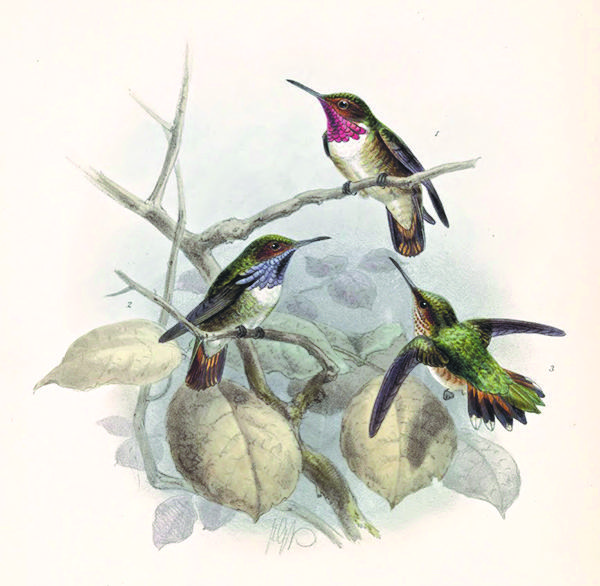Endemism, Resilience, and the Glow-throated Hummingbird (Selasphorus ardens)

By Ezekiel S. Jakub of Conservación Panamá Panama is not a large country, in fact, in comparison to the United States; Panama is roughly equivalent in size to South Carolina. As we have previously discussed in many articles, the level of biodiversity here in the tropics is simply astounding when compared to the temperate climate. To further interest your senses, there is a really neat biological concept called “endemism” that occurs often in areas of high diversity and Panama is no exception to the rule. “Endemism”, as a biological concept, means that a particular species (Bird, Plant, Reptile & Et) geographically exists in a restricted area; being confined; belonging to an exclusive area. There are several endemic species which occur in Panama, restricted to the borders of Panama, and which do not occur outside of Panama (hence this neat idea of “restricted existence”). As you may imagine, when a species is endemic, in many cases this can cause trouble for its ultimate survival. This can occur due to an increased sensitivity to human development and loss of habitat. If you, as a bird for example, are restricted to a small area … this can make you more susceptible to these anthropomorphic influences. In fact, this can make you less resilient.
“Resilience”. This is also a neat biological concept, which I enjoy explaining to people. Resilience is the general ability a system has to absorb change without disturbing the condition of the whole. An easy analogy would be a bolt on a bridge. There are thousands upon thousands of iron bolts that hold together a bridge. If by chance we loose only 1 or maybe even up to 100 of these bolts the bridge will still stand. The question is at what threshold does the bridge fail? What is the limit of bolts that we can loose before the whole “system” (or the bridge) fails? Because a bridge has so many bolts to hold it together we might say the bridge is very resilient, as it will take the loss of many, many bolts to change the “entities” current condition, which is upright and functioning. Each bolt that we remove inadvertently weakens the system’s total resilience and makes it more susceptible to change. We would say this is lessening the resilience of the system.
This concept works directly in nature as well. When we have a natural system, each animal, each organism, has a specific job or role that is plays. A few examples are: pollination, filtering out toxins, creating oxygen, and photosynthesis (to name only a few). Each bolt we loose in this system makes it less and less resilient and makes it more and more susceptible to change or a re-organization of the whole. Each tree lost, each ecosystem lost, each of these entities had a specific role to play for the system, and each loss lessens the system’s resilience.
In our example today, we are talking about an endemic species, called the Glow-throated Hummingbird, which survives to this day only in the Ngäbe-Bugle Comarca highlands. In the entire world, this species exists nowhere else.
Conservación Panamá has initiated research on this specific bird as its population is extremely limited in geographic range and it is quickly loosing habitat within that range. Only recently has this species status gone from vulnerable to endangered which makes it a priority species to study. We know very little about this species and a majority of the work describing it occurred before the 1920´s. Thus is important for us to learn as much as we can about how it survives, breeds, and lives within its system.
Biodiversity is a term often thrown around. In our case, lets think of biodiversity as the number of bolts we have on the bridge. The more species we have in the system of nature the more resilience we have and the higher probability that the system will not change beyond re-organization. This is why biodiversity in many respects is very important to maintain.
Conservación Panamá is dedicated to this type of research. We believe in increasing our technical knowledge of the natural system so we can understand better our anthropomorphic effects on that system. Only then can we truly understand what levels of change are acceptable within the natural system that maintains our species as well.
If you would like to learn more about our Glow-throated Hummingbird project, go online and see what we are up to:
www.conservacionpanamaca.org
